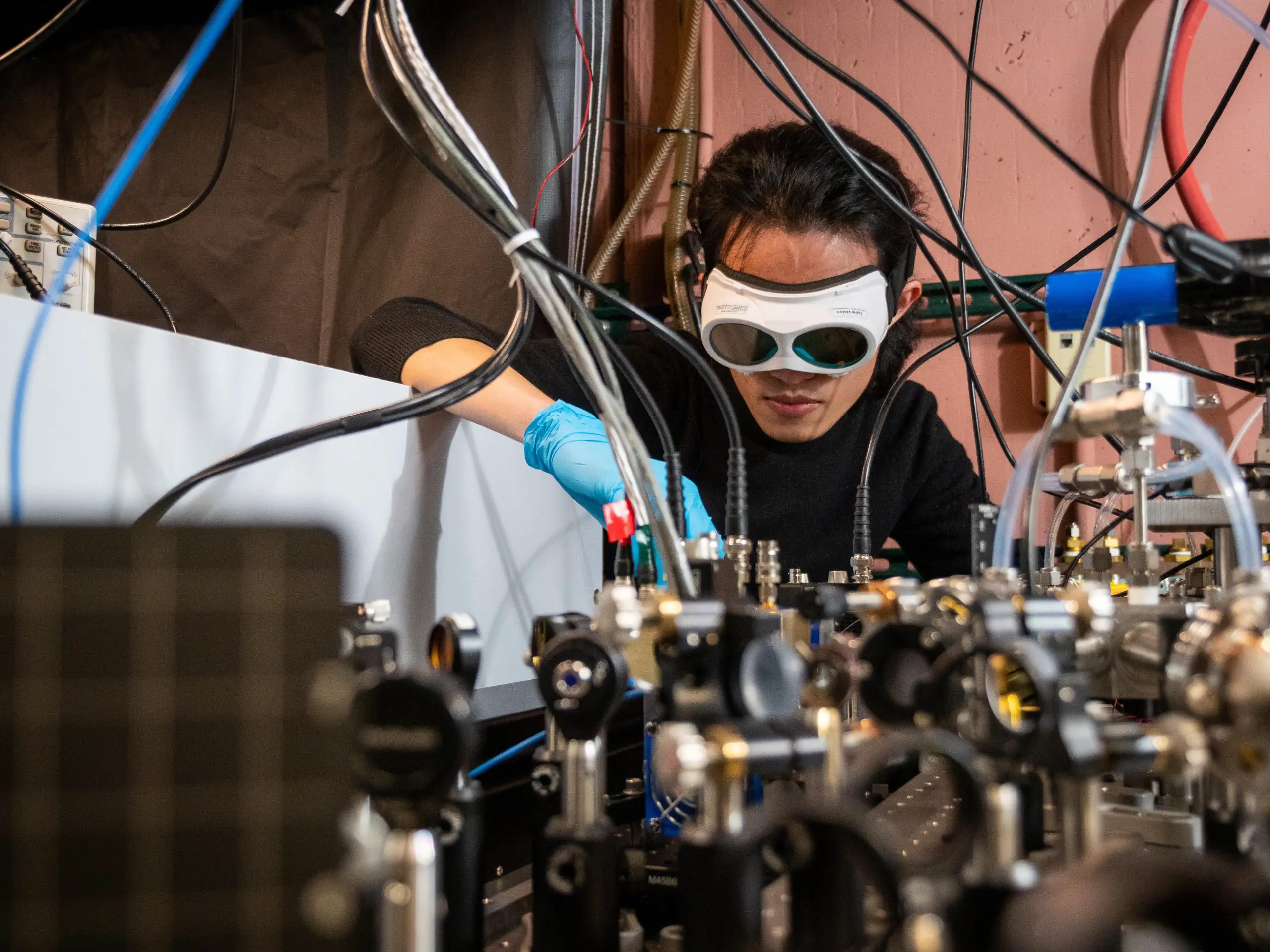Summary of Breathalyzer Sniffs Out COVID-19 and More:
Researchers from the University of Colorado Boulder and the National Institute of Standards and Technology (NIST) have developed a laser-based breathalyzer powered by artificial intelligence (AI) to detect COVID-19 in real time with 85% accuracy. The technology, born of Nobel Prize-winning frequency comb spectroscopy, can detect trace molecules at the parts-per-trillion level and is non-invasive, fast, and chemical-free. The researchers collected breath samples from 170 CU Boulder students and suspect the accuracy would have been higher if the breath and saliva/nasal swab samples were collected simultaneously. The team is now shifting its focus to using breath analysis to diagnose other diseases and is collaborating with pediatric and respiratory specialists.
*****
New Quantum Laser-Based Technology Offers Non-Invasive and Fast COVID-19 Diagnosis
A team of scientists from the University of Colorado Boulder and the National Institute of Standards and Technology (NIST) has developed a new laser-based breathalyzer powered by artificial intelligence (AI) technology. This AI-backed breathalyzer can detect COVID-19 in real-time with high accuracy. The study’s findings were recently published in the Journal of Breath Research.
The breathalyzer technology could revolutionize medical diagnostics and help diagnose various conditions and disease states. “Our results demonstrate the promise of breath analysis as an alternative, rapid, non-invasive test for COVID-19 and highlight its remarkable potential for diagnosing diverse conditions,” said first author Qizhong Liang, a Ph.D. candidate in JILA and the Department of Physics at CU Boulder. JILA is a partnership between CU Boulder and NIST.
Scientists have been trying to tap into the wealth of information exhaled breath can provide by analyzing the unique chemical signatures that create a specific “breath print” that provides valuable insights into our body’s internal conditions. Researchers have used the sense of smell in dogs, rats, and bees to detect diseases such as cancer, diabetes, and tuberculosis.
Frequency Comb Spectroscopy
As far back as 2008, Jun Ye’s lab reported that frequency comb spectroscopy could potentially identify disease biomarkers in human breath. Frequency comb spectrometry is a laser-based technique that creates a series of ultra-short pulses of light that act as “teeth” of a comb, covering a wide range of frequencies. By analyzing the effect of light-molecule interactions on the comb’s teeth, the researcher can analyze the molecular properties of a breath sample.
The technology lacked sensitivity and, more importantly, the capability to link specific molecules to disease states, so they never tested it for diagnosing illness. Ye’s team has since improved the sensitivity a thousandfold, enabling the detection of trace molecules at the part-per-trillion level. They’ve also harnessed the power of AI. “Molecules increase or decrease in concentrations when associated with specific health conditions. Machine learning analyzes this information, identifies patterns, and develops criteria we can use to predict a diagnosis,” said Liang.
Breath Collection for COVID Testing
Between May 2021 and January 2022, the research team collected breath samples from 170 CU Boulder students who had, in the previous 48 hours, taken a polymerase chain reaction (PCR) test, either by submitting saliva or a nasal sample. Half had tested positive, half negative.
For safety reasons, volunteers were asked to come to an outdoor campus parking lot, where they blew into a sample-collection bag and left it for a lab tech waiting at a safe distance. The process took less than one hour from collection to result.
Compared to PCR, the gold standard COVID test, breathalyzer results matched 85% of the time, which is considered excellent for medical diagnostics. The accuracy would have likely been higher if the breath and saliva/nasal swab samples were collected simultaneously.
Building a Smaller Breathalyzer
For now, the breathalyzer consists of a complex array of lasers and mirrors about the size of a banquet table. Efforts are underway to miniaturize such systems to a chip scale, allowing for “real-time, self-health monitoring on the go.” Scientists are working to develop a Human Breath Atlas, which maps each molecule in the human exhale and correlates them with health outcomes.
The team is collaborating with pediatric and respiratory specialists at the CU Anschutz Medical Campus to explore how the breathalyzer can diagnose diseases and enable scientists to understand them better, offering hints about immune responses, nutritional deficiencies, and other factors that could contribute to or exacerbate illness.
Jun Ye said, “We are just at the very beginning of training our laser-based nose. The more we teach it, the smarter it will become.”

